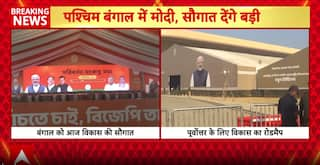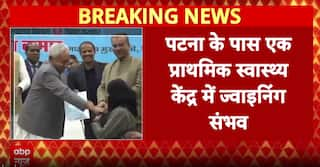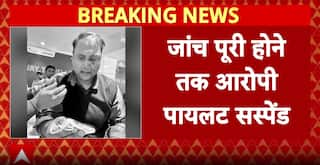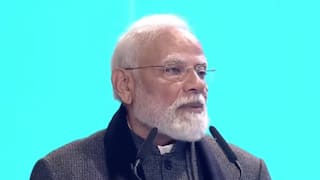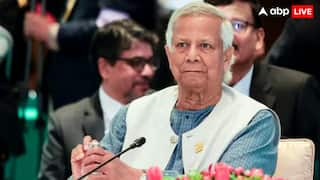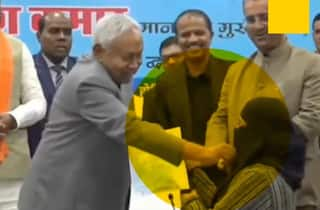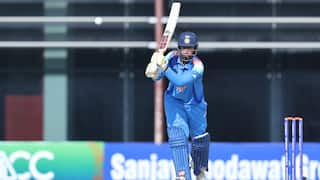Explorer
Testing the Strategic Embrace: The first Trump-Modi bilateral

Things appear to be "All shook up" to much of the world ever since the Trump Administration took over in America.
The new President's much publicised "unpredictability" has something to do with the perception.
And his ready willingness to challenge shibboleths -NATO, the UN, the relationship with Germany and Britain, certainly North Korea, if not quite China, climate accords, Mexico.
Also there have been, several sallies against Indians taking American jobs, and getting away with being a major polluter. Pakistan too has been warned to stop aiding and abetting terrorists.
Put together, it has the pundits guessing at Trump's next move. He is said to play a baffling game of hard and soft ball simultaneously. But is it a negotiating stance, or plain ineptitude and confusion ask the less charitable analysts?
But much of the existential bile on display may well be because Donald Trump's resounding win last November confounded the analysts and pollsters alike. At least, till very near the end of the presidential campaign.
His unstoppable win as a rank outsider to the political establishment shocked, and profoundly disrupted, the fondly held "world-view" of the liberal US media, and that of the supporters of the Opposition Democrats.
And this incredulity continues to run through the liberal-left all around the world.
But, as Prime Minister Modi touches down in Washington, the ambient "noise" clearly hasn't deterred either India or the US from potentially taking forward their "strategic" relationship.
It is one, advanced decisively, after years of the Nixon-Kissinger-bred dislike of India's erstwhile geostrategic positioning in the Soviet camp.
It was the George W Bush and Barak Obama presidencies, a Democrat administration following on from a Republican one, that saw India drawing closer to the US, albeit in a very slow minuet, drawn out over the last 16 years.
This is cited as evidence of bipartisan support for a tilt to balance the burgeoning influence of China in the Asian theatre.
Of course, India being a minnow compared to the Chinese major carp, it will need a lot of strategic partnering, if this vision, should it be held fast to, is to be realised.
But the very slowness of developments in the US "tilt", combined with compensatory and preservative moves to assuage both Chinese and Pakistani concerns, have reduced its credibility over the years in both countries.
However, India does source increasing amounts of its military requirements from the US now and bilateral trade tops $100 billion.
Journalist Seema Sirohi is much quoted for pointing out that America has a plethora of overlapping regulations from multiple US Government departments and authorities with regard to the transfer of "proprietory technology". This in the context of the recently signed MoU between India's Tata and Lockheed Martin to manufacture the latest version of the F-16 fighters in India.
And India, on its part, is very keen on the technology transfer part of any military purchase, or Make-in-India project.
Sirohi suggests that the inking of the pact between the two corporate entitities cannot really go forward without enabling, and usually long-winded, US Government approvals.
She does indicate however that there is an improbable scramble to get US Government backing for the deal during Modi's brief two day visit.
Other issues, such as the Trumpian vow to stop shifting US jobs overseas, also need to be addressed.
The media reports on the proposal say one thing and its opposite at the same time.
Some suggest that it has been done in anticipation of receiving Indian Air Force (IAF) orders for at least 100 fighters.
And others espouse its diametric opposite, that the F-16 production line will not move from Texas, to be henceforth manufactured in India, unless the Indian Ministry of Defence places orders first.
There is also the question of how future Pakistani orders for the plane or its spares will be handled. The F-16 is a tried and tested aircraft, of which over 3,000 are in use in 26 airforces around the world.
By way of contrast to the uncertainty on the implementation of the F-16 agreement, the Trump administration has just cleared, on the eve of the Modi visit, the sale of 22 "unarmed" Guardian surveillance drones (The Guardian Maritime Predator B Variant), manufactured by General Atomics.
This is something that the previous Obama administration sat on, even as the Indian Navy requested access to them about a year ago.
This drone sale clearance therefore, pending a formal announcement, perhaps while Modi is in the US, is being seen as the first operational evidence of India's enhanced status as a "major defence partner". This was decided on by the Obama administration, towards its final days.
In other news, even as the restrictions on Indian IT personnel and their H1B visas will probably not see much leeway, there is a possibility of establishing a personal chemistry between the two leaders.
They have spoken three or more times on the telephone so far.
Both are partial outsiders to the entrenched political establishment in their respective countries, relentlessly criticised by those they have so decisively displaced.
Trump famously calls disparaging commentary on himself "fake news" and dubs most of his critics "liars".
Modi also hits back against his detractors, particularly in his public speeches on the stump, tearing into the malicious,if sour-graped mockery.
And though Trump is a billionaire, and Modi rose from humble beginnings, their right-of-centre orientation,combined with populist and patriotic leanings, their fondness for military strength, and a dogged determination to change things, is something they certainly have in common.
History has seen fit to cut both Narendra Modi and Donald Trump, in some ways, from the same cloth. This, does make for a certain anticipatory frisson for this first bilateral.
President Trump on his part, has also been setting the stage. He has criticized Pakistan with regard to its sponsorship of international terrorism, particularly in Afghanistan and India. And the bipartisan sponsorship of a new bill, that seeks to do away with Pakistan's status as a major non-Nato ally of the US, is also an interesting development. He has also put China on notice for its activities in the South China Sea.
India, on its part, clearly wants access to high technology military equipment for its Make in India programme. It already has some joint ventures and collaborations with the US, Russia, Israel, South Korea, and France, spread across missiles, submarines, aircraft-carriers, helicopters, howitzers, drones etc., and also in vital “intelligence” sharing.
The Modi Government does however need to address the issue of new fighter aircraft urgently.
It scrapped, in 2015, the complex, one-sided, and monolithic, winner-takes-all Medium Multi-Role Combat Aircraft (MMRCA) tender.
As a stop-gap measure, the Modi Government ordered 36 of the French Dassault Rafale twin-engined fighters.
This pipped the aspirations of the Eurofighter Typhoon, American options such as Lockheed's F-18, and Boeing's F/A-18 E/F Super Hornet and Russian MiG-35s.
That they lost in technical trials to the Dassault Rafale notwithstanding.
Meanwhile, in the less expensive single-engined fighter stakes, the indigenously developed (but largely made with foreign componentry) Tejas,has at last made a relatively low-cost entry- in its first rendition. This version is nevertheless on order already for squadron strength numbers.
Future generations of the new, improved, Tejas, will also be inducted into the Indian Air Force (IAF).
While India has indicated the need to add just one more line of single-engined fighters, given the immense delays and glitches in the Tejas project, this policy may have to be modified towards a multiplicity instead.
With local plants, maintenance and spares will be far less problematic, even from multiple vendors.
For now, The single-engined Tata-Lockheed F-16 Block 70, should it pass muster through both governments, will likely compete for custom with the similarly single-engined Saab-Adani's Gripen-E. Both manufacturers are keen to set up their production lines in India.
With over 200 aircraft on the shopping list for a start, both in single and double-engined formats, there is certainly enough to go around.
India needs to increase its air power up to a minimum strength of 44-45 squadrons, from the grossly inadequate 32 squadrons of mostly old aircraft at present.
The longer term need is to replace practically the whole fleet, save the Russian Sukhois.
By this reckoning, India will need over a 1,000 aircraft eventually.
Making these planes in India, particularly in numbers, will be much less expensive and strategically secure.
Theoretically, both the Gripen-E and the F-16 could each get enough orders initially to make their local ventures economically viable. This, besides catering to export demand for aircraft, spares, refurbishments, customisation.
All this, while vastly increasing India's strategic military manufacturing depth.
The present squadrons of single-engined MiG-21's,that make up 75% of the IAF, are superannuated.
In the wings, there is also discussion on the Indo-Russian joint venture development of the Sukhoi 50, a vastly expensive if correspondingly advanced, state-of-the-art twin-engined fighter.
But this first bilateral visit is about much more than a military shopping list. It has the potential of substantially recalibrating the strategic embrace between the two countries. Will it live up to its potential?
(Gautam Mukherjee is a blogger on politics, economics and policy. His twitter handle is @gautammuk)
Disclaimer: The opinions, beliefs and views expressed by the various authors and forum participants on this website are personal and do not reflect the opinions, beliefs and views of ABP News Network Pvt Ltd.
Follow Blog News on ABP Live for more latest stories and trending topics. Watch breaking news and top headlines online on ABP News LIVE TV
View More








